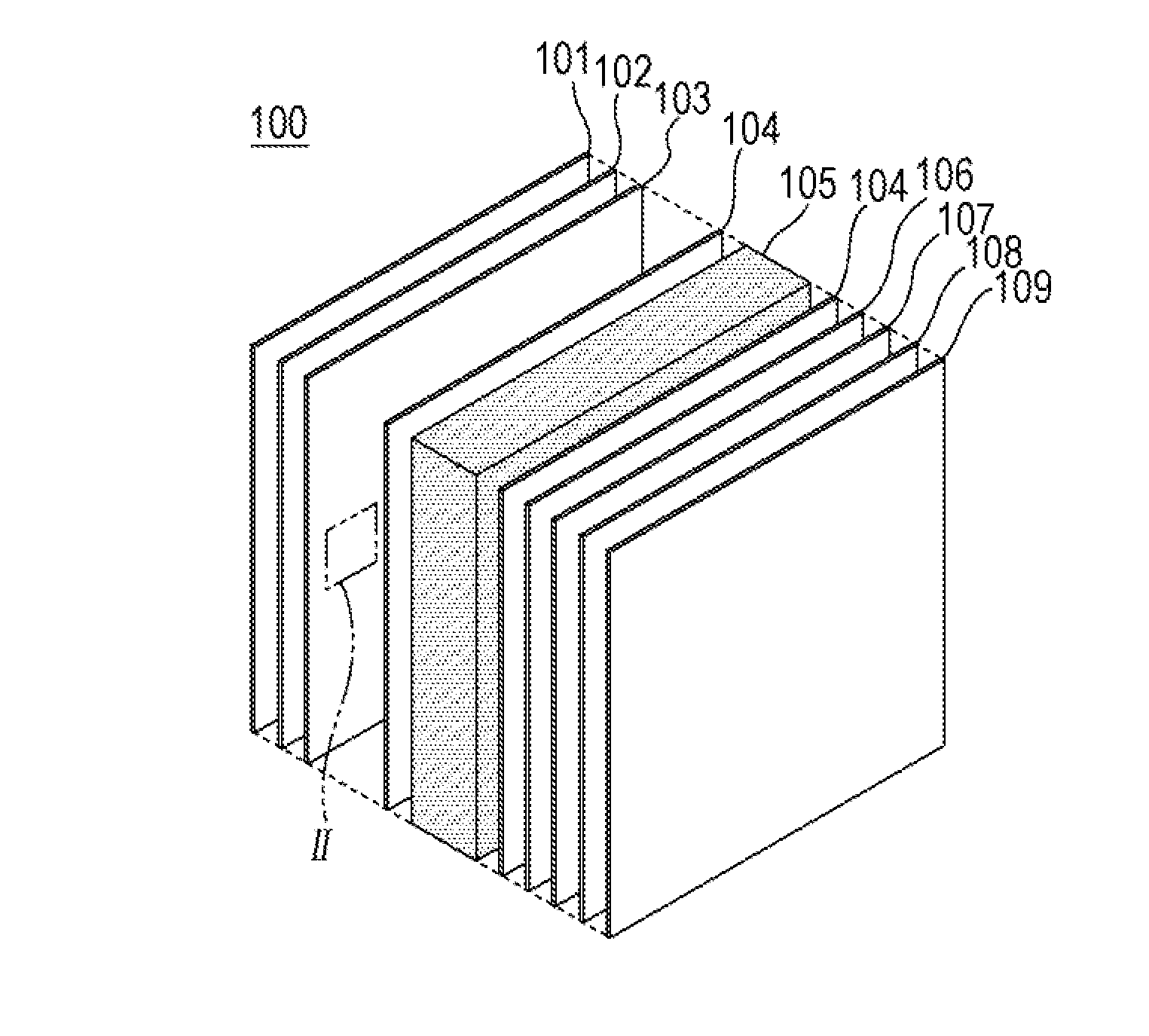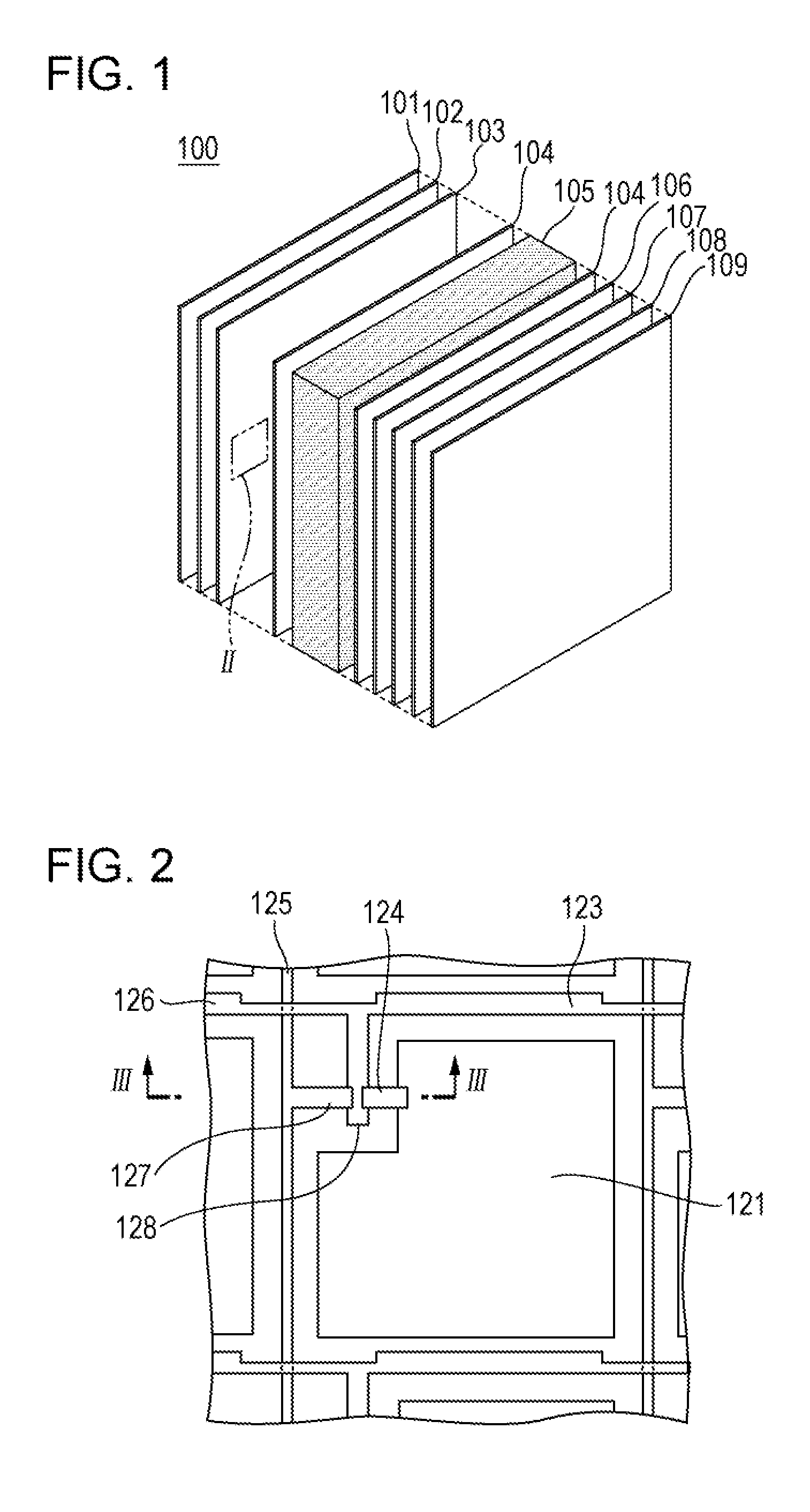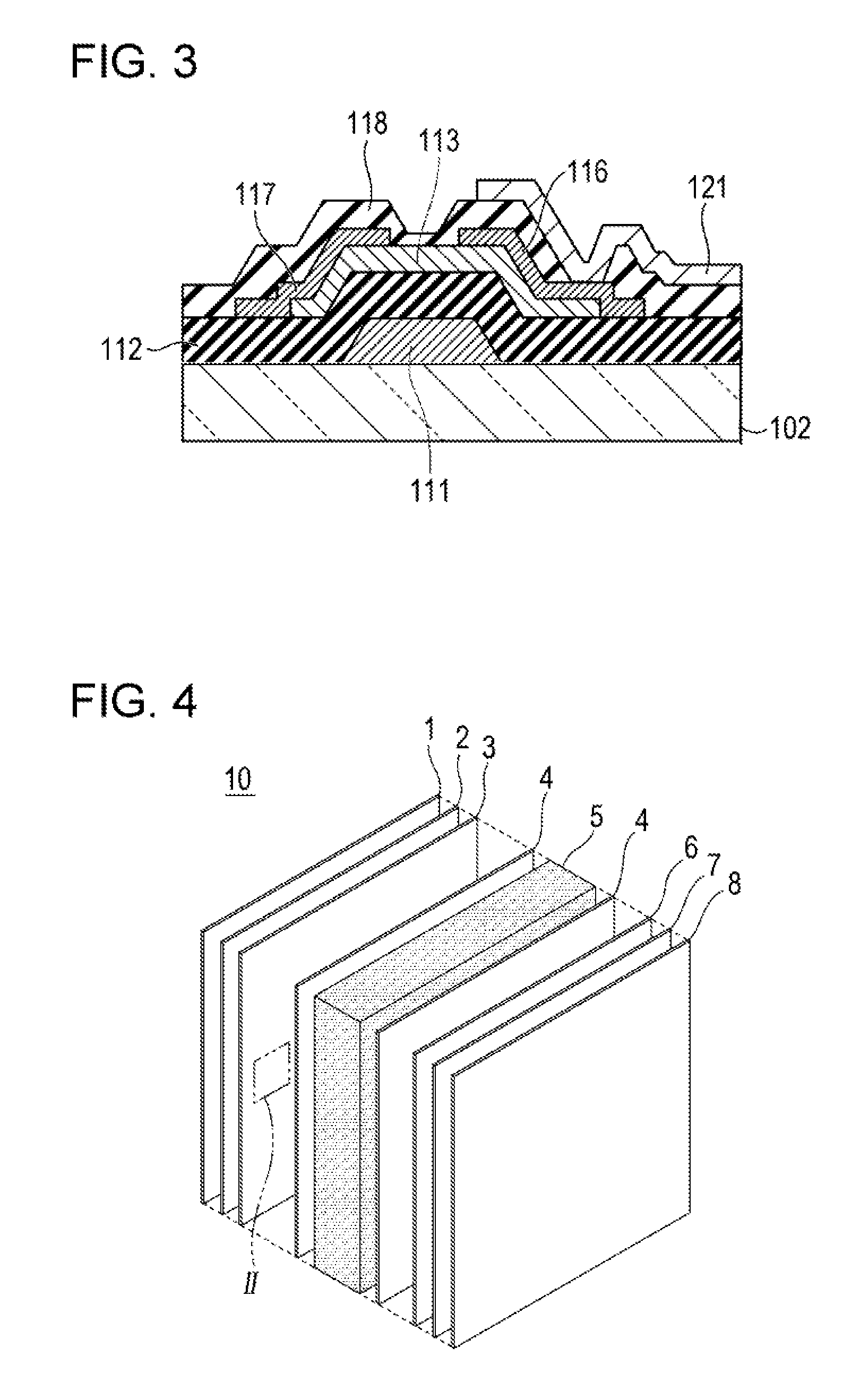Liquid crystal display device
a display device and liquid crystal technology, applied in liquid crystal compositions, instruments, chemistry apparatus and processes, etc., can solve the problems of low reliability of oxide semiconductor thin-film transistors, strict impurity control, electrical characteristics of display devices, etc., to achieve the effect of reducing the voltage holding ratio (vhr), increasing the ion density (id), and consuming less power
- Summary
- Abstract
- Description
- Claims
- Application Information
AI Technical Summary
Benefits of technology
Problems solved by technology
Method used
Image
Examples
first embodiment
[0028]A liquid crystal display device according to a first preferred embodiment of the present invention includes oxide semiconductor thin-film transistors and a particular liquid crystal composition and generates a substantially perpendicular electric field between first and second substrates. The liquid crystal display device according to the first preferred embodiment is a liquid crystal display device having electrodes on both first and second substrates, for example, a vertically aligned (VA) transmissive liquid crystal display device.
[0029]The liquid crystal display device according to the first preferred embodiment of the present invention preferably includes first and second opposing substrates, a liquid crystal layer containing a liquid crystal composition between the first and second substrates, a plurality of gate bus lines and data bus lines arranged in a matrix on the first substrate, thin-film transistors disposed at intersections of the gate bus lines and the data bus...
second embodiment
[0204]A liquid crystal display device according to a second embodiment of the present invention includes oxide semiconductor thin-film transistors and a particular liquid crystal composition and generates an electric field containing a component parallel to the substrate surface. The liquid crystal display device according to the second preferred embodiment is an in-plane switching (IPS) liquid crystal display device or a fringe-field switching (FFS) liquid crystal display device, which is a type of IPS liquid crystal display device.
[0205]An IPS liquid crystal display device according to the second preferred embodiment of the present invention preferably includes first and second opposing substrates, a liquid crystal layer containing a liquid crystal composition between the first and second substrates, a plurality of gate lines and data lines arranged in a matrix on the first substrate, thin-film transistors disposed at intersections of the gate lines and the data lines, and pixel e...
third embodiment
[0226]A liquid crystal display device according to a third embodiment of the present invention includes oxide semiconductor thin-film transistors and a particular liquid crystal composition. The liquid crystal display device preferably includes color filters 6 formed on the same substrate as the electrode layer 3 including the thin-film transistors, i.e., on the first substrate. This structure is commonly known as color-filter-on-array (COA). Specific structures will now be described with reference to FIGS. 10 and 11. FIG. 10 is another example of a sectional view of a liquid crystal display device. A first substrate 2 having an alignment layer 4, thin-film transistors (11, 13, 15, 16, and 17), color filters 6, and pixel electrodes 21 formed thereon and a second substrate 7 having an alignment layer 4 formed thereon are separated from each other such that the alignment layers 4 face each other. This space is filled with a liquid crystal layer 5 containing a liquid crystal compositio...
PUM
| Property | Measurement | Unit |
|---|---|---|
| temperature | aaaaa | aaaaa |
| temperature | aaaaa | aaaaa |
| resistivity | aaaaa | aaaaa |
Abstract
Description
Claims
Application Information
 Login to View More
Login to View More - R&D
- Intellectual Property
- Life Sciences
- Materials
- Tech Scout
- Unparalleled Data Quality
- Higher Quality Content
- 60% Fewer Hallucinations
Browse by: Latest US Patents, China's latest patents, Technical Efficacy Thesaurus, Application Domain, Technology Topic, Popular Technical Reports.
© 2025 PatSnap. All rights reserved.Legal|Privacy policy|Modern Slavery Act Transparency Statement|Sitemap|About US| Contact US: help@patsnap.com



